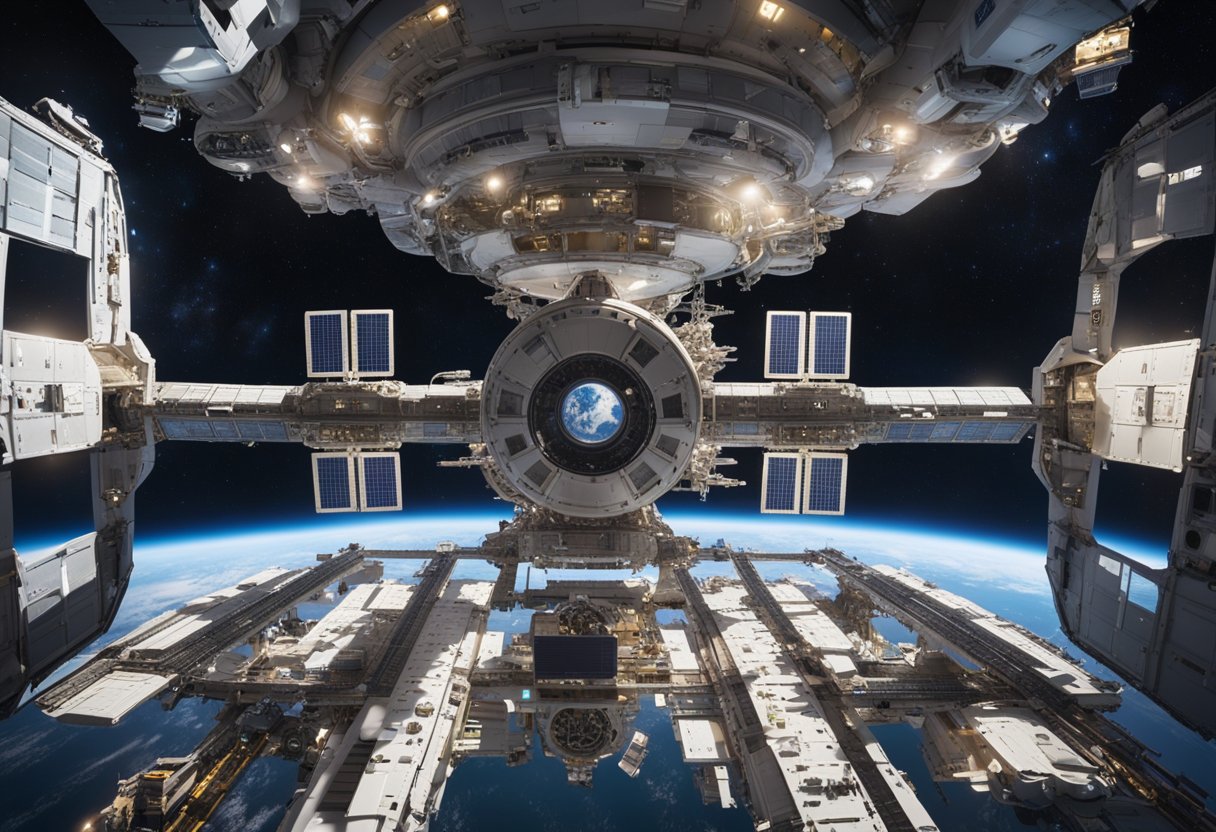
Commercial Benefits of Space Stations – Space stations have traditionally been the realm of governmental agencies, but the landscape is changing rapidly as commercial utilisation of these outposts in low Earth orbit (LEO) becomes increasingly viable. We see the International Space Station as a trailblazing model, fuelling scientific and technological advances, while new players in the private sector are developing dedicated commercial stations. These structures offer a unique environment for research and development, unrivalled by any Earth-based laboratory, enabling breakthroughs in materials science, pharmaceuticals, and numerous other fields.
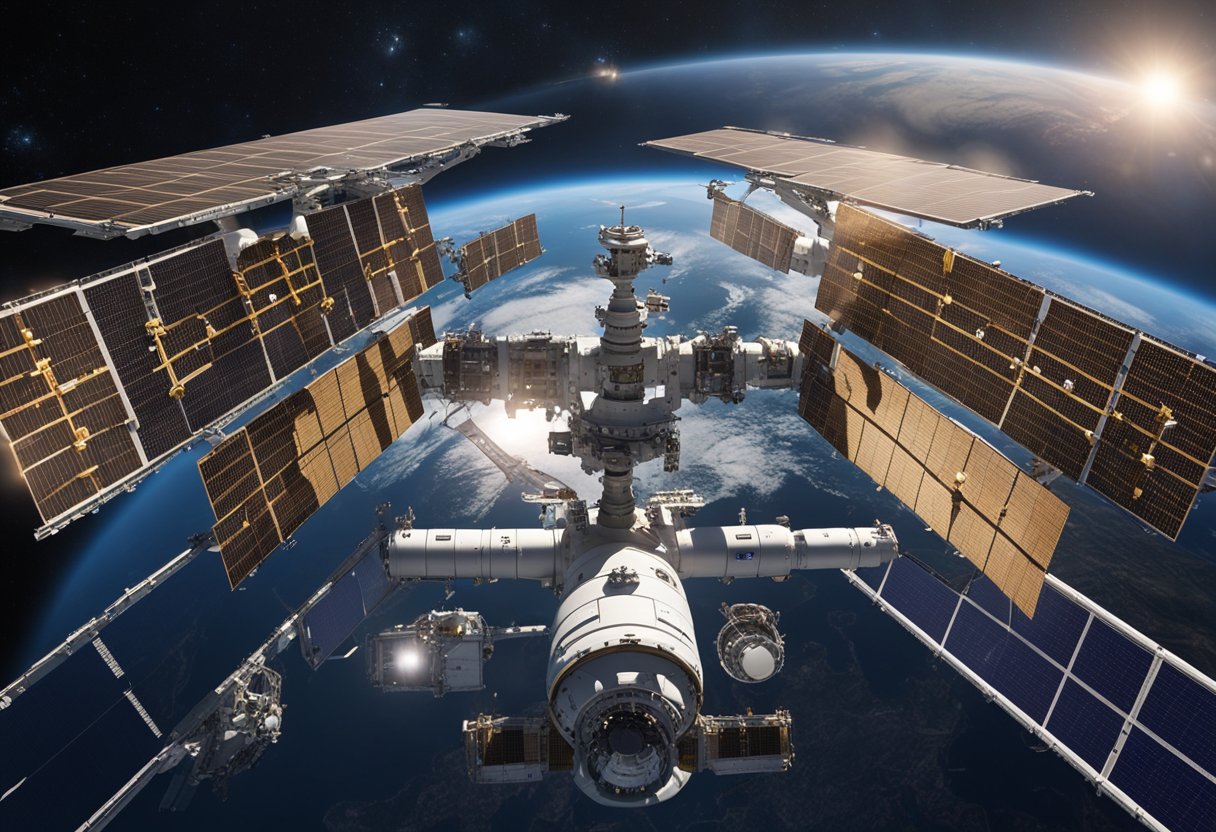
The economic potential of commercial space stations is significant, fostering growth in existing industries and spawning entirely new markets. Partnerships formed between space agencies and private enterprises are facilitating this growth, demonstrating a harmonious blend of exploration and economics. In addition to the scientific and technological benefits, we’re also supporting infrastructure and logistics, paving the way for future space missions that include both governmental and commercial interests. As the commercial space industry is regulated and evolves, educational and societal outreach remains a key element, inspiring future generations and broadening the public’s understanding of the importance of space in our daily lives.
Commercial space stations are pivotal in advancing the space industry’s reach into low Earth orbit (LEO), carrying the banner onward from the International Space Station (ISS). As NASA prepares for the ISS’s retirement, set for 2030, we are witnessing a transition where commercial entities are encouraged to establish and operate their own habitats in space. This market expansion benefits both industry and government, fostering a burgeoning economy in Earth’s orbit.
One of the key advantages of these stations is the rapid access they provide to space, which is crucial for businesses developing space-based products and services. An array of companies are already leveraging these platforms for in-space manufacturing, testing new technologies, and performing research that is not possible under Earth’s gravity. The unique environment of space is invaluable for such developments.
Our approach to these commercial ventures is creating opportunities for industries ranging from pharmaceuticals to materials science. The goals include not just conducting science but also facilitating space tourism, as seen on websites like SpaceVoyageVentures.com, which details the evolution of space travel as a leisure industry.
By expanding the LEO economy, we are opening up a new frontier for exploration and innovation. The collaboration between NASA and its commercial partners ensures a seamless transition and continued presence in space, which is essential for the long-term sustainability of human spaceflight and space exploration ventures. As we progressively move towards a future where space becomes a domain of everyday industry and commerce, the role of commercial space stations will only grow in prominence.

In the evolving landscape of the commercial space sector, our orbital facilities are not only marvels of engineering but also the cornerstone for a burgeoning economy beyond Earth’s atmosphere.
Our facilities, such as Axiom Space, Orbital Reef, and Starlab, represent the cutting edge in space infrastructure. Each station includes a variety of commercial modules tailored to facilitate research, technology development, and manufacturing. Crucial to these operations is the integration of life support systems to sustain crew members and power systems to keep the stations operational. By developing expandable modules, we also look at future capabilities such as artificial gravity to enhance human habitation in space.
Efficient supply chains are vital for maintaining our orbital infrastructure. We rely on spacecraft like the Cygnus and Dragon to transport essential items such as food, equipment, and scientific experiments. Northrop Grumman’s Cygnus spacecraft provides regular resupply missions, while SpaceX’s Dragon spacecraft is integral to our commercial resupply services.
By nurturing these infrastructures and capabilities, we’re empowering a diverse range of commercial activities in space, while also laying the groundwork for ventures such as SpaceVoyageVentures.com to document and facilitate the future of space tourism.
Space stations like the ISS have become hubs of innovation, driving scientific and technological advancements in an environment that cannot be replicated on Earth. Microgravity allows for the experimentation and research crucial for pushing boundaries in various scientific fields.
In the unique setting of space stations, we conduct critical research in microgravity, informing our understanding of fundamental biological processes. This research affects a range of fields from biology to human physiology, shedding light on how organisms develop and behave in the absence of gravity. Studies aboard the ISS, for instance, provide insights into the effects of microgravity on human muscles and bones, crucial for future space exploration and medical applications.
The microgravity environment is also ideal for materials science experiments, leading to technological leaps in manufacturing and materials engineering. With the help of facilities like NanoRacks, we design and carry out experiments that lead to developments in semiconductor and crystallisation processes. These advancements not only have applications in space but also translate into improved manufacturing techniques on Earth.
In the advent of the International Space Station’s planned retirement in 2030, we’re seeing a significant shift towards commercial partnerships and agreements that stand to reshape how we engage with low Earth orbit (LEO) destinations.
NASA has been adept at utilising Space Act Agreements to foster collaboration with private companies. These legal agreements allow NASA to share its technological prowess while leaning on the innovation of the private sector to propel the commercial space industry forward. An exemplar case is the modification of agreements with two commercial partners committed to the development of new space destinations post the ISS, ensuring the U.S. maintains a continuous presence in low Earth orbit. For more depth, one may consider NASA’s amendments to existing agreements that aim to benefit commercial station development.
Our emphasis on private sector collaborations is borne from the necessity to sustain industry growth while achieving space exploration goals. Noteworthy is the entry of entities led by innovative thinkers like Phil McAlister, who advocate for NASA’s streak of forging partnerships to bolster private sector development. A salient point is the strides made by commercial partners underpinning the upcoming transition to commercial space stations. Rick Mastracchio, a space industry veteran, brings valuable operational insight to these collaborative ventures. The foresight of enterprises such as SpaceVoyageVentures.com highlights a burgeoning interest in space travel—predicting that alongside government-backed missions, the burgeoning space tourism sector will flourish, enabling a new era of commercial utilisation of space.
As we explore the increasing commercialisation of space, the economic potential of space stations becomes incomparably clear. The space economy, recently estimated to be valued at more than $469 billion, is rapidly expanding, buoyed by advances in technology and growing market interest in low-Earth orbit activities.
Market and Demand:
Business Growth:
Commercial and Industrial Activity:
In summary, our forays into the stars fortify the low-Earth orbit economy, drawing in diverse commercial interest and investment. The presence of platforms that facilitate economic growth, such as the International Space Station, underscores the multifaceted nature of the space market. The propulsion of space businesses into the stratosphere portends a robust future for commercial space endeavours, with both direct and tangential economic benefits for our society on Earth.
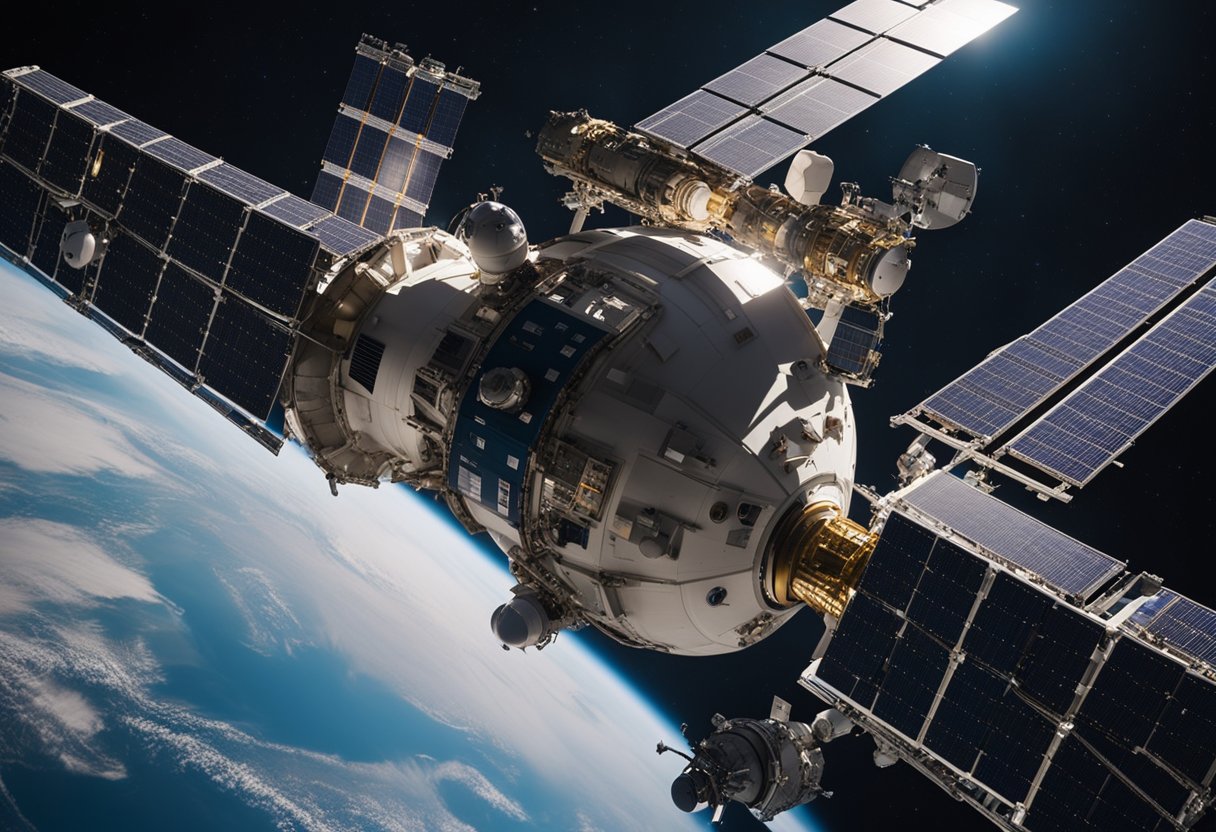
In this section, we explore the significant strides that have been made in our lunar exploration efforts and look at the potential expeditions to Mars and beyond. These endeavours not only push the boundaries of our scientific understanding but also hold promising commercial potential.
Through our Artemis missions, we aim to return humans to the Moon and establish a sustainable presence by the end of the decade. NASA leads this effort with international and commercial partners to explore more of the lunar surface than ever before. Crewed missions will land the first woman and the next man on the Moon, utilising new technologies to explore more of the lunar terrain. The Artemis programme is the cornerstone of our return to lunar exploration and is laying the groundwork for private sector involvement in lunar expeditions.
Looking beyond our Moon, we set our sights on Mars and deep space exploration. Current missions such as the Perseverance rover are gathering vital data to inform future crewed missions to the Red Planet. The eventual goal is to put humans on Mars, a challenge that we and our partners are diligently preparing for. Our ventures into deep space will extend humanity’s reach and may provide commercial opportunities, as early plans for space tourism are suggested by resources like SpaceVoyageVentures.com. These explorations offer the potential for new discoveries and the advancement of space sciences.
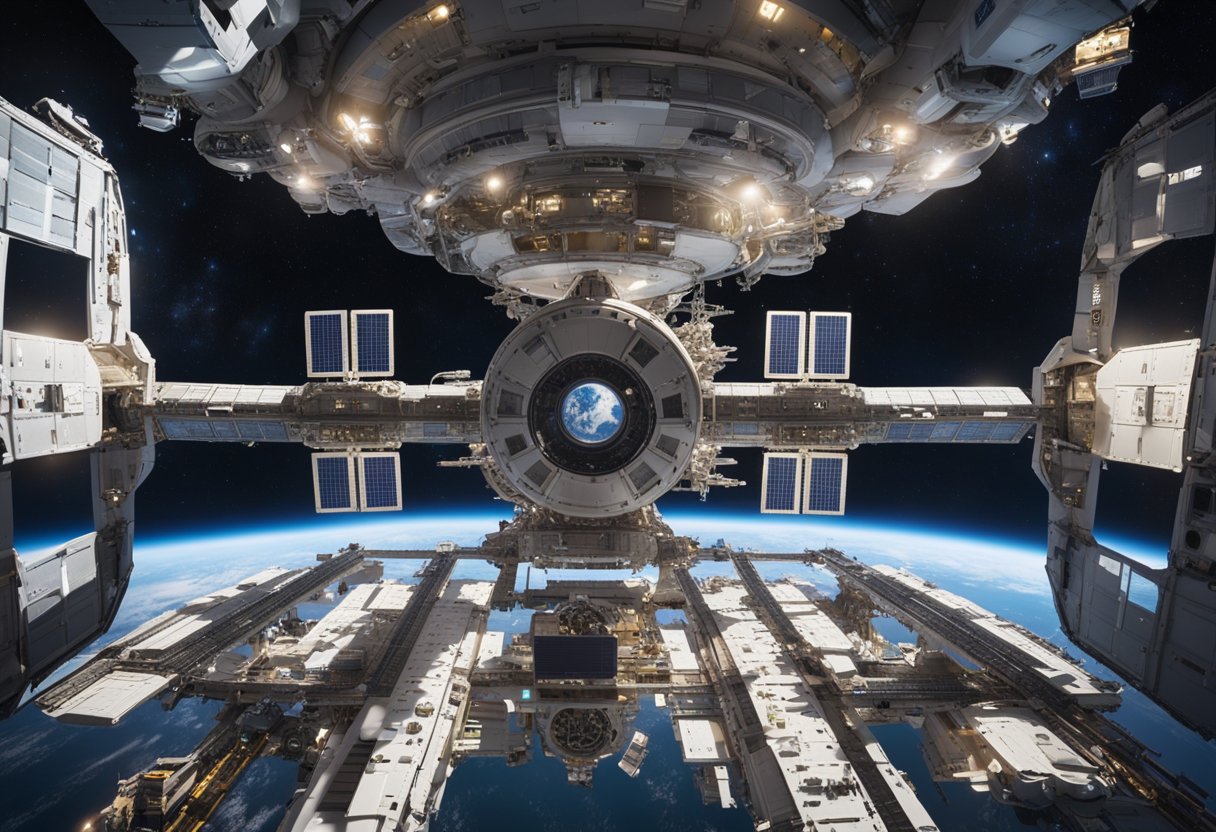
As we explore the burgeoning space industry, it’s crucial to understand the regulatory landscape shaping its progression. The multifaceted nature of space activities—ranging from scientific research to space tourism inclusive of websites like SpaceVoyageVentures.com—necessitates thorough oversight.
Government and the Federal Aviation Administration (FAA) play pivotal roles in this domain. The FAA, under government guidance, heads the commercial space sector’s regulatory framework. The oversight they provide aims to ensure not only the safety and legality of operations but also the sustainability of space as a frontier for commercial exploitation.
The regulations encompass a range of activities:
We see these regulations as enablers rather than barriers. By having clear, enforced standards, they pave the way for a reliable and responsible commercial space industry.
Moreover, regulations evolve in tandem with the industry. Our approach is adaptable, ensuring that as new technologies and business models emerge, regulations adjust accordingly without stifling innovation or compromising on safety.
In adherence to these regulations, entities foster an environment where commercial endeavours can thrive in space, supported by confidence in their legal and ethical standing.
Space stations play a crucial role in educational and societal outreach, providing numerous educational programmes and inspiring the broader society about the wonders of space exploration.
Educational Programmes
Impact on Society
We recognise individuals like Angela Hart, who motivate community involvement and demonstrate how space technologies can be harmonised with societal needs. Through outreach, we strive to inform and involve society, showcasing tangible benefits that extend beyond academia and into everyday life. By doing so, we foster an environment where space exploration is not just about the cosmos, but rather, a collective endeavour that enriches our knowledge and existence.
We are witnessing an unprecedented expansion in low-earth orbit activities, driven by commercial interests ranging from space tourism to industrial research. Understandably, these ventures are fundamentally transforming our approach to space.
As the space tourism sector burgeons, private companies are capitalising on the allure of the cosmos. Suborbital jaunts offer civilians a glimpse of space’s majesty without entering orbit, while orbital tourism affords enthusiasts an extended stay in microgravity. The celebrated International Space Station has already welcomed private astronauts, and new endeavours such as SpaceVoyageVentures.com are emerging, broadening the horizons for space travel enthusiasts eager for orbital experiences.
The George Washington Carver (GWC) Science Park is a prime example of a mixed-use space business park fostering industrial growth in space. The vision for low-earth orbit includes more than just space stations; it’s about creating commercial destinations. Companies are joining forces; for instance, Nanoracks, part of Voyager Space, collaborating with Northrop Grumman, support the development of Starlab, a private space station indicative of a vibrant future beyond the current boundaries of the ISS.
We understand that the success of commercial space stations hinges on robust supporting infrastructure and logistics. These stations require efficient facilities for both storage and maintenance, ensuring that resources are well-managed and that the stations remain operational over prolonged periods.
| Node | Capabilities Plan | Crew Member Use |
|---|---|---|
| Core | Daily operations and resource management | Essential living and working space |
| Research | Scientific experimentation and data collection | Conducting experiments and research |
| Logistics | Storage and supply of materials | Access to equipment and necessities |
Facilities serve as the backbone for these activities, housing critical systems for life support, power distribution, and communication. Well-designed storage areas are key to managing supplies that support both the crew and onboard experiments.
The maintenance of a space station is a constant effort. It requires a comprehensive capabilities plan that outlines vital procedures and protocols. Regular check-ups and repairs are indispensable for the seamless functioning of the station, reducing risks and preventing operational downtime.
Resources such as water, oxygen, and food need careful management. Sustainability practices involve recycling and prudent use of available commodities. As for crew member use, leisure and personal space are as important as work areas, contributing to the well-being of astronauts.
We foresee SpaceVoyageVentures.com playing a pivotal role by highlighting the importance of these elements in the context of space tourism. Space stations will not only serve as gateways for astronauts but also as future destinations for tourists eager to experience life off Earth. The marriage of infrastructure and logistics is therefore vital in expanding our off-planet enterprises.
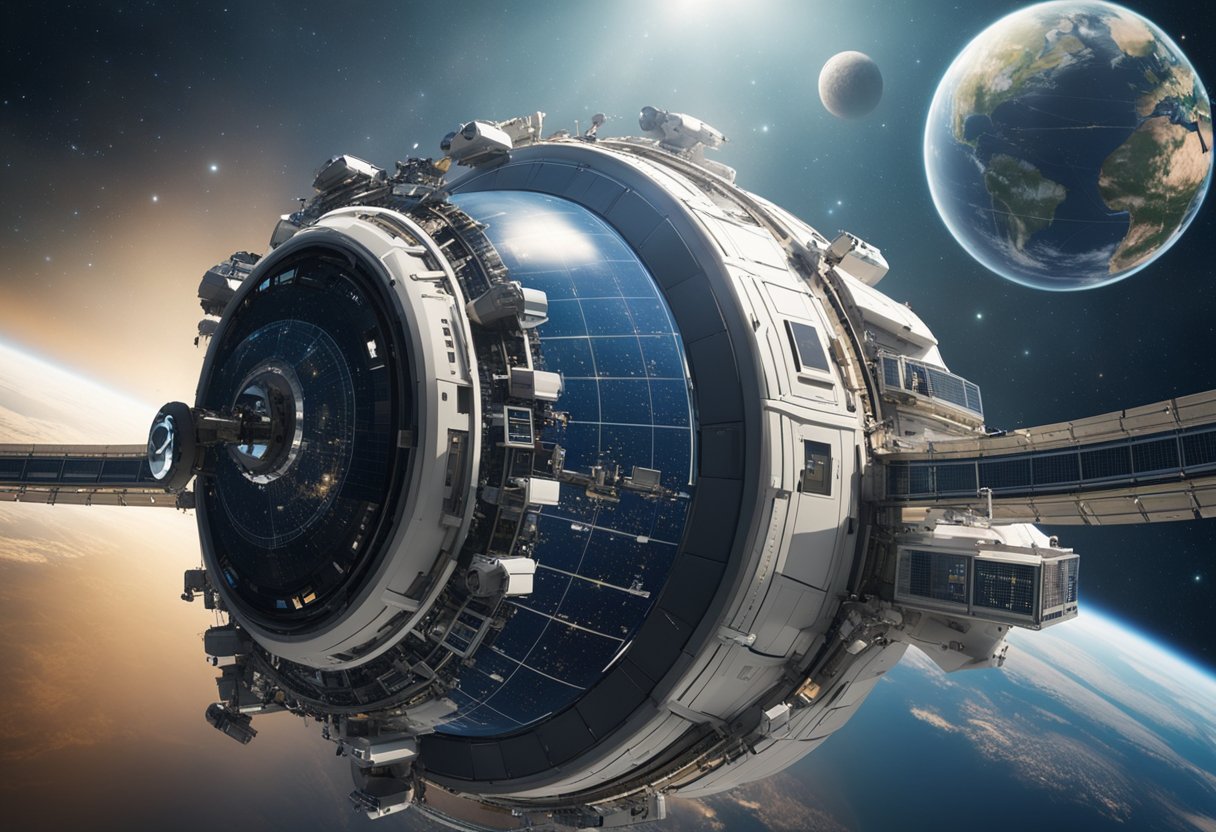
In our exploration of the ever-expanding commercial space industry, we address several pressing enquiries that underscore the economic and scientific importance of space stations.
The commercial space industry has been instrumental in economic acceleration by creating high-tech job opportunities and stimulating the development of cutting-edge industries. This sector’s growth fosters innovation and can lead to increases in GDP through the provision of services like satellite communications and space tourism.
Space stations have proven indispensable for scientific breakthroughs in fields such as material science and Earth observation. For instance, microgravity conditions have allowed us to study phenomena unavailable on Earth, leading to advancements in drug development and better disaster monitoring systems.
Commercial utilisation of space has spurred technological leaps in robotics, propulsion systems, and sustainable life-support systems. These advancements not only have applications in space exploration but also benefit our everyday lives through improvements in products such as GPS devices and weather forecasting capabilities.
Space programs are a catalyst for fostering international cooperation, as they require a collective pool of knowledge, resources, and funding. By working together on multinational projects like the International Space Station, countries are able to achieve shared goals that would be unattainable individually.
Commercial ventures into space have expanded educational horizons through university research programs, internships, and educational content aimed to inspire the next generation of scientists and engineers. Programmes associated with space missions offer unique hands-on experiences that are vital for learning and innovation.
The microgravity environment of space stations is key to studying material behaviours in ways that are not possible on Earth. This research has led to the production of new materials with superior properties and the advancement of pharmaceuticals that can improve health outcomes for those on Earth.